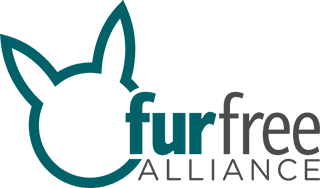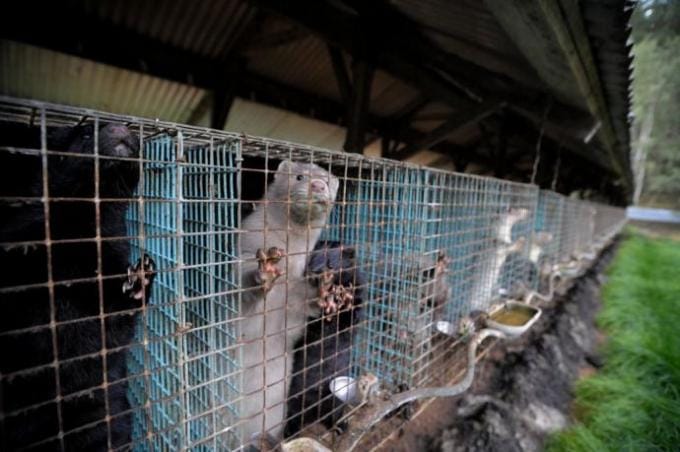For the second year running, the European fur industry recently pimped its products at a lavishly organised exhibition in the European Parliament. This was an unashamed attempt to mainstream this morally questionable trade.
The Nordic countries, in particular, have been doing their utmost to brand their fur industry as being of high quality in terms of animal welfare. Finnish-owned Saga Furs, one of the main players in the European fur industry, has been involved in working against animal welfare improvements in several countries. The fur industry’s attitude towards animal welfare is very different from what is publicly expressed.
Fur farming and its animal welfare problems are the same everywhere, in Finland as well as in Denmark and China. Active predators such as minks and foxes, the main species reared on fur farms, are kept in long rows of battery wire mesh cages where their behavioural needs cannot be met.
The solitary mink is kept in close vicinity to other animals. Swimming and hunting are significant aspects of the species’ lifestyle. In the wild, these animals move over large territories that always stretch along waterways. The species of fox that is kept on fur farms also moves over large territories in the wild. Yet imprisoned in wire mesh cages, these animals are denied the ability to express their species’ specific behaviour, such as running, playing and digging.
Is European fur produced under strict animal welfare regulations as the fur industry claims? The answer is no. In fact, in the European countries with the highest animal welfare standards for animals kept for fur production, fur farming is either forbidden or the wire mesh battery cages have been phased out. The UK for example banned fur farming over a decade ago.
If you happened to pass by the fur industry’s exhibition, you may have been given the impression that the fur industry themselves is improving animal welfare through the development of their own animal-based welfare indicators; a scheme known as WelFur.
The truth is that WelFur does not address the welfare problems associated with the confined cage environment, as highlighted by the European Commission’s Scientific Committee on Animal Health and Animal Welfare: “Since current husbandry systems cause serious problems for all species of animals reared for fur, efforts should be made for all species to design housing systems which fulfil the needs of the animals.”
Studies aimed at improving housing conditions have, on the whole, been conceived and conducted within the framework of the standard cage environment. This is also the problem with the fur industry’s own animal welfare indicators – they are based upon the wire mesh battery cage systems of today. WelFur seems more like a project aimed at validating fur farming as a means of livelihood, rather than at developing better welfare conditions for the animals.
Any significant improvements in animal welfare, such as possibilities for mink to swim and for foxes to express important natural behaviour through digging, would mean unprofitability for the fur industry. The fur industry is, therefore, working hard to keep conditions on fur farms as they are, with the animals paying the price.
A variety of opinion polls conducted across Europe indicate that the opposition towards fur farming is strong. In Belgium and Germany, 86 percent are against fur farming and 78 percent of Swedes think that fur farming should be banned. In Italy, 91 percent of those polled stated that they are opposed to fur farming.
EU member states have an opportunity to play a leading role for animal welfare globally by phasing out fur farming. We call upon the members of the European Parliament to support national bans on fur farming in the member states.
>>UPDATE: Below is a reply to Fur Europe’s opinion piece, which can be read here.
There is sufficient independent scientific evidence that the raising of active carnivorous animals, such as mink and fox, in small wire mesh battery cages seriously compromises animal welfare. The European fur industry chooses to overlook the fact that the report considers recent scientific studies, including some of those funded by the fur industry. These studies confirm that animal welfare is compromised on fur farms.
The Norwegian Veterinary Association stated earlier this year that it “regards today’s fur farming as clearly incompatible with the demands in the Animal Welfare Act (…) The animal welfare in fur farming has shown little improvement over the last 15 years, despite the use of disproportionally large official resources both on research and inspection, compared with other animal husbandry”.
It is correct that we do not believe that animals should be raised in small cages for a luxury product nobody needs. We believe the animals’ needs should be respected – that is what animal welfare is all about.





